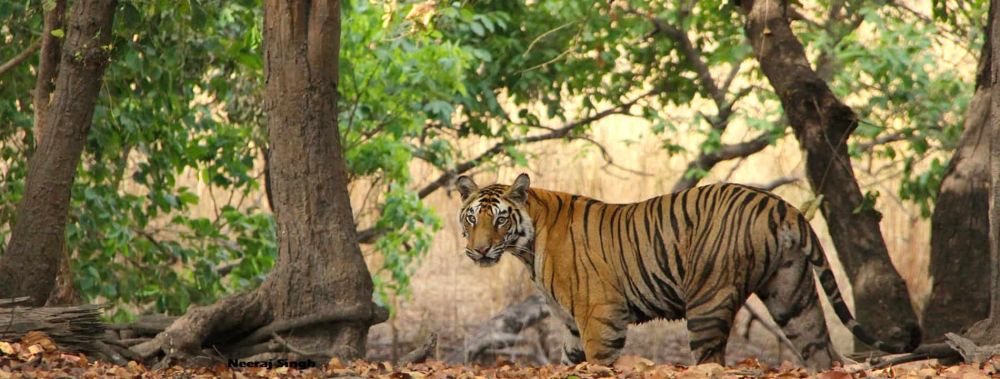

Bandhavgarh National Park, located in Madhya Pradesh, India, has a long-standing history with its origins tracing back to ancient times. It was once a hunting reserve of the Maharajas of Rewa and evidence of human activity can be found in the ancient caves where inscriptions and rock paintings exist, dating as far back as the 1st century BC.
The area was declared a national park in 1968, with the initial area of 105 square kilometers. It was expanded to include adjoining forests over the years and currently spans an area of approximately 1536 square kilometers. The Magdhi Zone is one of the core areas in Bandhavgarh where tourists are allowed to enter from Tala near the Tala gate.
Bandhavgarh National Park became a key attraction for wildlife enthusiasts, photographers, and nature lovers from when it was first announced as a national park. It gained fame globally for its high density of the Royal Bengal tigers, which offers a high likelihood of tiger sightings.
The Park consists of various zones, including Tala, Magadhi, Khitauli, and Panpatta. Among these, the Magdhi Zone has garnered attention for its excellent tiger spotting opportunities and mesmerizing landscapes. It includes a significant number of watering holes which attract a variety of animals and provides ample opportunities to witness the diverse wildlife in their natural habitat.
A notable recent trend is the growing popularity of responsible and sustainable tourism practices. Visitors are increasingly seeking environmentally friendly options, and the park has taken measures to accommodate this, such as implementing stricter regulations on vehicle entry to reduce the impact on wildlife and the environment.
In addition, the rise of digital platforms and social media has boosted the visibility of the Park, with many sharing their experiences and photographs online, further increasing its allure as a top wildlife destination.
Conservation-led tourism initiatives have also taken flight, with local communities involved in guiding and conservation activities. This not only provides an income source for the locals but also educates tourists about the importance of conservation.
With advancements in technology, there have also been improvements in safari experiences. Tourists now can book their safaris online, and guides are now using smart devices to provide real-time updates on animal sightings, enhancing the visitor's overall experience.
To visit the Magdhi Zone, tourists need to obtain entry permits that are available on a first-come-first-serve basis. Safaris can be conducted twice a day, in the early morning and the late afternoon, providing thrilling wildlife encounters against the backdrop of a rising or setting sun.
Visitors can book jeep safaris accompanied by a knowledgeable guide or explore the zone through the park’s elephant safari option. The best time to visit Bandhavgarh National Park for prime wildlife viewing is during the winter months, from October to March, when the weather is cooler and more comfortable.